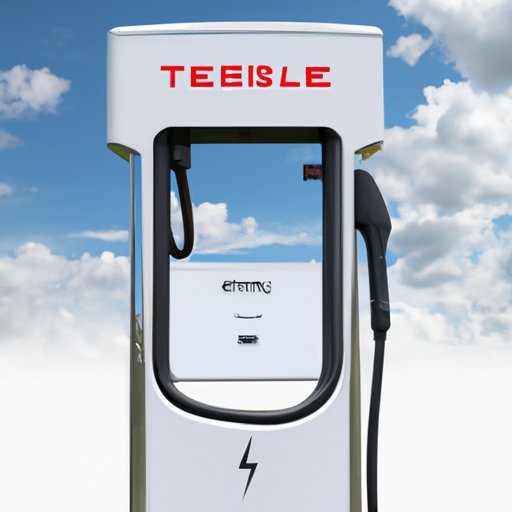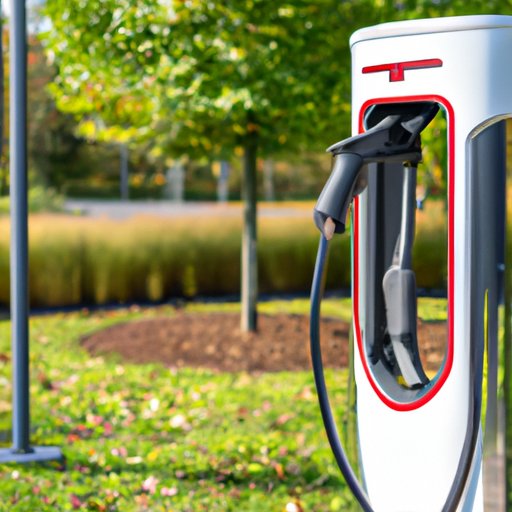
Introduction
One common question many Tesla owners or those considering purchasing a Tesla ask is whether Tesla charging stations cost money. In this article, we will explore the economics of charging at Tesla stations and provide insight into the true cost of charging versus traditional gasoline refueling. We will also discuss the benefits of using Tesla charging stations and provide tips on how to use them without breaking the bank.
The Economics of Charging at Tesla Charging Stations
When it comes to charging at Tesla stations, the cost can vary. However, in most cases, Tesla charging stations do require payment. The cost of charging is based on the amount of energy consumed by the vehicle, and the price per kilowatt-hour (kWh) varies by location.
According to Tesla’s website, the average cost of electricity at their Supercharger stations is $0.26 per kWh. To put this in perspective, if you have a 75 kWh battery and charge it from 10% to 90%, it would cost around $23.
Comparing the cost of Tesla charging versus traditional gasoline refueling can vary based on factors such as the price of gasoline in your location, your vehicle’s MPG, and the distance you need to drive. However, in most cases, charging at Tesla stations is less expensive than refueling with gasoline. The average cost of gasoline in the United States is currently around $3, according to the U.S. Energy Information Administration. If you drive a vehicle with an MPG of 25 and traveled 300 miles, you would need around 12 gallons of gas, costing $36. In comparison, charging a Tesla Model S to travel the same distance would cost around $18.
Are Tesla Charging Stations Worth the Cost?
While charging at Tesla stations does come with a cost, there are many benefits to using them. Firstly, Tesla charging stations provide quick, convenient charging while on the go. Superchargers can charge your Tesla up to 80% in just 30 minutes, meaning you can get back on the road quickly without having to wait for hours for your vehicle to charge. Additionally, Tesla charging stations are often located along popular travel routes, making it easy to plan your road trips, and some charging stations have amenities such as restrooms and restaurants.
On top of these benefits, using Tesla charging stations can save you money in the long-term. While purchasing a Tesla may come with a higher initial cost than purchasing a traditional gas vehicle, the cost of driving and maintenance is significantly lower. According to Alternative Fuel Data Center, the average cost to operate a Tesla Model S is $0.23 per mile, whereas the average cost to operate a gas-powered vehicle is $0.63 per mile.
To see how using Tesla charging stations can save money in the long-term, here are a few case studies. For example, if you drive 1,000 miles per month and pay the average cost of electricity at Tesla charging stations ($0.26 per kWh), it would cost $51 to charge your vehicle fully. In comparison, if you drove 1,000 miles per month in a gas-powered vehicle that has an MPG of 25 and gasoline costs around $3, it would cost $120 to refuel your vehicle. Over a year, this adds up to a savings of $834 by using Tesla charging stations.
Maximizing Your Savings: How to Use Tesla Charging Stations Without Breaking the Bank
Now that we’ve established how using Tesla charging stations can save money in the long-term, it’s essential to consider how to use them without breaking the bank. Here are some tips and tricks:
- Plan ahead for road trips and try to charge your vehicle before you leave to avoid unnecessary charging
- Take advantage of Tesla’s “Idle Fee” waiver which waives the fee if you move your car within five minutes of charging completion. This can help you avoid unnecessary fees
- Consider purchasing a Tesla with a larger battery capacity to avoid needing to charge as frequently
- Use destination charging stations, which are often free and located at hotels, airports, and other public places
By following these best practices, you can save money while still utilizing the convenient features of Tesla charging stations.
The Truth About Free Tesla Charging: Separating Myth from Reality
One common misconception about Tesla charging stations is that they are all free. While some Tesla charging stations may offer free charging, such as those located at Tesla dealerships, most do not. Additionally, free charging may only be available for a limited time or to specific Tesla models. It’s essential to check the specific charging station’s pricing and policies before charging your vehicle.
A Comprehensive Guide to Understanding Tesla Charging Station Fees
Understanding the fees associated with Tesla charging stations can be confusing, so here’s a breakdown:
- Supercharging Fees: Charging at Superchargers costs $0.26 per kWh and may also come with additional fees such as an “idle fee” if you leave your car at the charging station after it has completed charging
- Destination Charging Fees: Destination chargers are charging stations located at public areas such as hotels, airports, and restaurants, and may be free to use or require payment. It’s essential to check the specific charging station’s pricing and policies before charging.
- Home Charging: Charging your Tesla at home is the most cost-effective method and can be done with a standard 120-volt outlet or a 240-volt outlet. Depending on your home’s electrical setup, you may need to purchase charging equipment or hire an electrician to install it.
It’s important to note that fees may vary based on location and Tesla model. Additionally, Tesla’s pricing and policies may change over time, so it’s essential to stay updated on any changes.

Why Paying for Tesla Charging Stations is a Smart Investment
While paying for charging at Tesla stations may seem like an unnecessary expense, it can provide long-term savings. By charging at Tesla charging stations, you are utilizing the most convenient and efficient charging options for your vehicle, potentially extending the lifespan of your battery. Additionally, charging at Tesla stations can save money in the long-term, as we discussed in the “Are Tesla Charging Stations Worth the Cost?” section. Finally, paying for charging supports Tesla’s initiative of creating sustainable energy options for the future.
Tesla vs. Gas Stations: Analyzing the True Cost of Fueling Your Vehicle
Comparing Tesla charging stations versus traditional gas stations involves not only the cost but also the environmental impact. In terms of cost, using Tesla charging stations can save money in the long-term, as we stated previously. In addition, using Tesla charging stations reduces our dependence on fossil fuels and emissions harmful to the environment. According to the National Resources Defense Council, driving an EV that is powered entirely by renewable energy sources can reduce your carbon emissions by up to 80% compared to gas-powered vehicles.
Conclusion
In conclusion, Tesla charging stations do require payment, but the cost is generally less than traditional gasoline refueling. Additionally, using Tesla charging stations provides numerous benefits such as quick, convenient charging while on the go, and saving money in the long-term. By following the tips and tricks provided in this article, you can use Tesla charging stations without breaking the bank. Finally, choosing Tesla charging stations helps support sustainable energy options for the future while reducing your carbon emissions.





